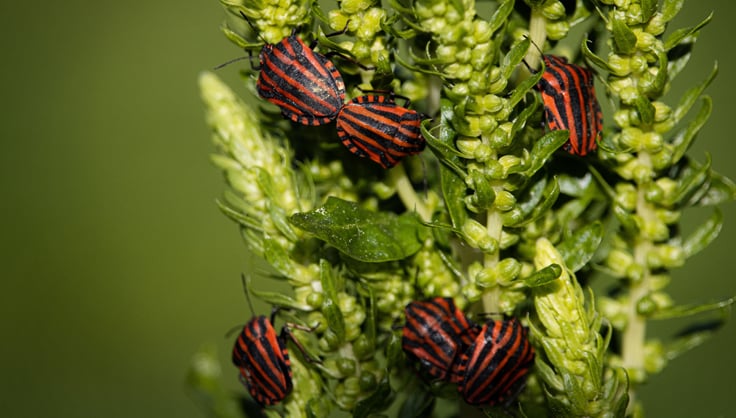Harlequin Bug

These small, shield-shaped bugs with bright red, orange, or yellow markings suck plant juices from leaves, stems flowers, and fruits, causing yellow or white blotches on leaves, distortion of plant parts, stunting, and dieback. They favor all plants in the cabbage family, including broccoli, cauliflower, kale, and Brussels sprouts. They also feed on strawberries, radishes, tomatoes, squash, beans, and other crops. Young plants may wilt and die if feeding is severe.
As garden pests, harlequin bugs are most prevalent in warmer climates, emerging from plant debris in spring to begin feeding and mate. Females lay eggs on the undersides of leaves. Newly hatched nymphs feed for 1 to 2 months before they molt into adults. Both nymphs and adults cause plant damage. There are multiple generations per year depending on the region. Harlequin bugs are native to Central and South America, but they can now be found throughout most of the U.S.
Prevention and Control
- Seek out varieties that are resistant to insect attack such as Early Jersey Wakefield cabbage and Snowball X cauliflower.
- Protect plants with garden fabric to prevent bugs from feeding and laying eggs.
- Mow or remove weeds (especially mustards and pigweed) in and around the garden.
- Scout leaf undersides of uncovered plants for harlequin bug egg clusters, which are small, white, and keg-shaped.
- Encourage predatory insects such as damsel bugs and pirate bugs.
- Turn the soil in fall to kill overwintering adults.
Last updated: 12/27/2022
Print this Article:
Get the Dirt
Stay up to date on new articles and advice. Please fill out the information below.
